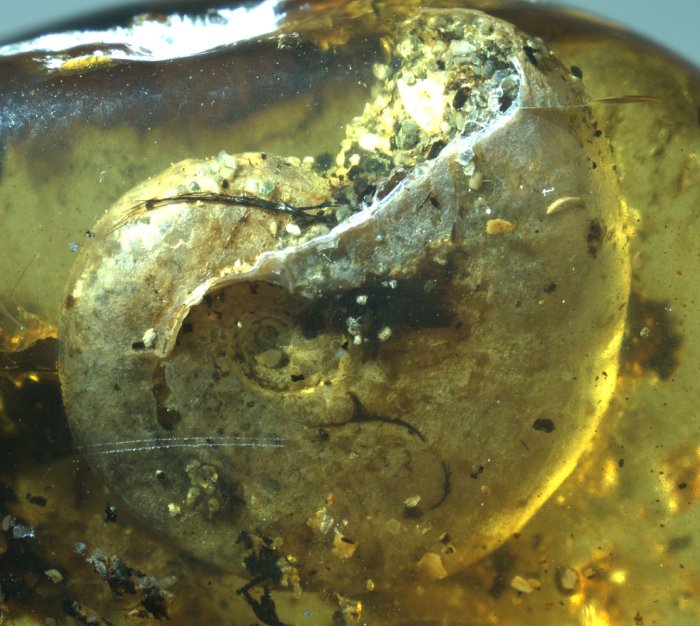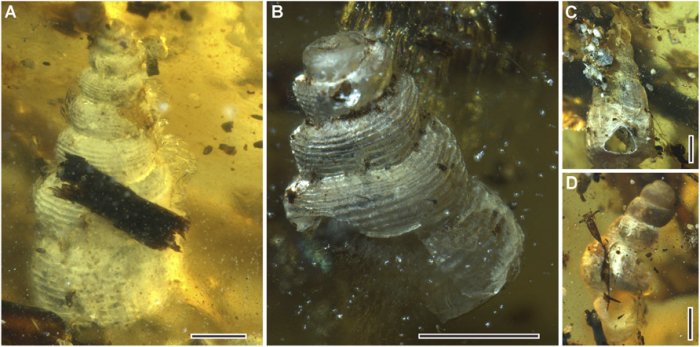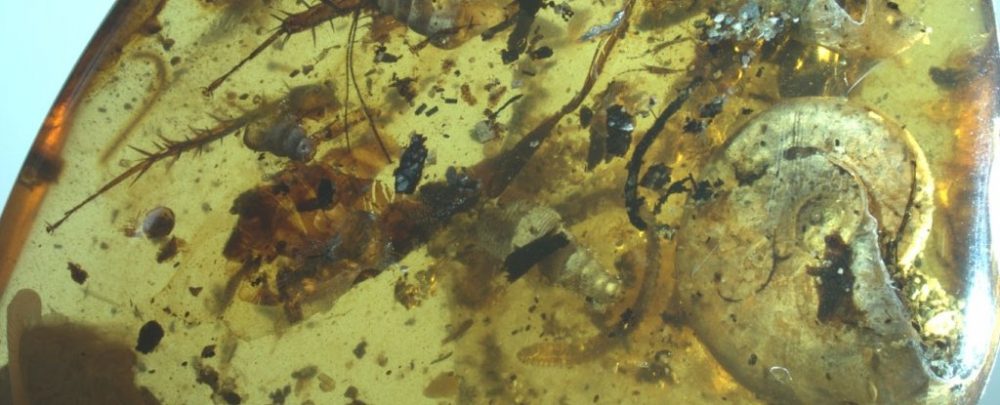Somehow sea creatures got fossilized in three resin around 100 million years ago, and it is an extremely rare find.
A piece of amber discovered in Myanmar in Southeast Asia has turned out to be a fascinating and rich resource for examining the world that existed around 100 million years ago. So far, the site has produced a treasure trove of ancient animals, including frogs, snails, a snake, weird feathers, and some rather odd bugs.
A Fascinating collection
But what do all of these animals have in common? They inhabit the land; they’re land-dwellers. Amber is fossilized tree resin, and inclusions usually comprise terrestrial and, rarely, aquatic organisms. But now, researchers say they have discovered something entirely unexpected in the piece of Cretaceous-era amber: sea creatures that somehow ended up side by side fossilized inside the amber.

A recent study reports how paleontologists have discovered four sea snails and a juvenile marine ammonite from the ocean. The researchers also detail how four intertidal isopods, which usually inhabit the zones between high and low tides, were also trapped in the ‘natural time capsule’ alongside sand over 100 million years old.
The piece of amber is a treasure trove of ancient animals. As many as 22 mites and what appears to be a goblin spider have been identified inside it. In addition to that, 12 insects and a millipede were captured inside the amber. And all of that creatures were packed inside amber that measures only 33 millimeters by 9.5 millimeters by 29 millimeters, resulting in a fascinating collection of rare, ancient animals.

Difficult to Date
And while the amber is a fascinating package filled with different types of rare, ancient animals, researchers say it is also a mystery as paleontologists have not been able to figure out how old it is accurately.
The piece of amber was found in the matrix of volcanic rock, and uranium-lead dating of zircons suggests the amber is no more than 99 million years old. However, a sandstone layer just above it was home to fossilized ammonite, thought to have lived 113 million years ago.
The amber may be much older than the terrain where it was recovered from. This means that it may very date back around 113 million years. But that is something scientists still need to determine.
A Rare Find
It is rare to find aquatic organisms in amber, and it is infrequent to find marine organisms in amber, let alone macroscopic marine organisms mixed with intertidal, terrestrial, and potentially freshwater aquatic organisms,” paleontologists wrote in their study.
The researchers also explain in the study how their discoveries suggest that the Burmese amber forest was living near a dynamic and shifting coastal environment. The ammonite also provides supporting evidence for the age of the amber, which is still debated and represents a rare example of dating using fossils present inside the amber. All in all, it’s an extremely rare discovery.
Join the discussion and participate in awesome giveaways in our mobile Telegram group. Join Curiosmos on Telegram Today. t.me/Curiosmos

